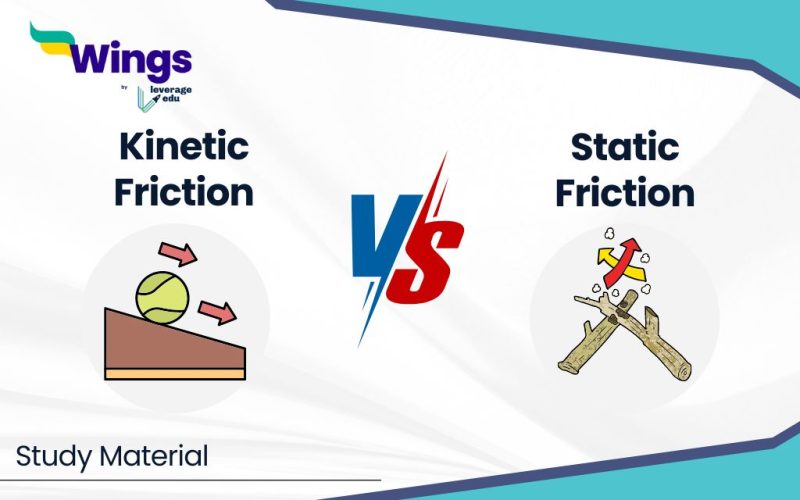The main difference between kinetic and static friction is that the frictional force operating on a body at rest is known as static friction, whereas the force of friction operating on a body in relative motion is known as kinetic friction. The main difference that can be seen between them is the frictional force operating.
Table of Contents [show]
What is kinetic friction?
Everything has kinetic friction, which hampers the motion of two or more objects. When an object wants to slide in one direction, the force acts in the opposite direction. The friction is also created when we apply the brakes to the car that has to stop. When someone is walking and wishes to stop abruptly,it is kinetic force that comes into action. However, things become more difficult when we have to halt in the middle of a puddle because there is less friction and less ability to help.
Kinetic Friction Formula
The equation of kinetic friction can be written as:
Force of kinetic friction = (coefficient of kinetic friction)(normal force)
Which can also be written as,
Fk= μk η
Application of Kinetic Friction
The below points provide some real-world examples of kinetic friction:
- To stop a bus or a car, kinetic friction is used for everything. Without friction, no moving object can stop.
- As a lubricant, oil is used in the machines to prevent wear and tear as to reduce friction.
What is static friction?
When two separate objects come into contact with one another but do not move relative to one another, it is because of static friction. Alternatively, the objects are constant and not in opposition to one another. Any force or attempt to move the objects is resisted by the force of static friction. For instance, static friction opposes your force when you attempt to push a heavy box on the floor, and it remains still.
Static Friction Formula
The static friction equation can be written as:
F = μstatic N
Where,
F = Force of static friction
μstatic = coefficient of static friction
N = normal force
Application of Static Friction
A few of the real-time examples of static friction are:
- The ground is covered in stone
- A vehicle stopped on a hill
- Clinging to things
- Pushing a large object, such as a truck
Difference between Static and Kinetic friction
Here in this section, we have discussed some of the important differences between static and kinetic friction:
| Components | Static Friction | Kinetic Friction |
| Definition | When friction is present in between two or more objects that are not moving | When friction is present between two or more objects that are in motion with regards to each other |
| Magnitude | The magnitude is greater due to the greater value of its coefficient | Due to the low value of its coefficient, the magnitude is comparatively lesser |
| Range | When friction is present between two or more objects that are in motion with regard to each other | Even when force is applied, it remains constant |
Similarities Between Static and Kinetic Friction
Imagine you’re trying to push a heavy box across the floor. Both static and kinetic friction are like forces trying to stop the box from moving.
- Same goal: They both act against the motion between the box and the floor. Think of them as like a little brake pad resisting the movement.
- Strength depends on weight: The harder you push (which creates a stronger pressing force between the box and the floor), the more friction there is to resist it.
RELATED POSTS
FAQs
The two types of frictional force are- static and Kinetic
Sticky notes, is an example of static friction.
Kinetic frictional force is applied when trying to stop a moving vehicle.
This was all about the “Difference between Kinetic and Static Friction ”. For more such informative blogs, check out our Study Material Section, you can learn more about us by visiting our Indian exams page.
 One app for all your study abroad needs
One app for all your study abroad needs















 45,000+ students trusted us with their dreams. Take the first step today!
45,000+ students trusted us with their dreams. Take the first step today!
